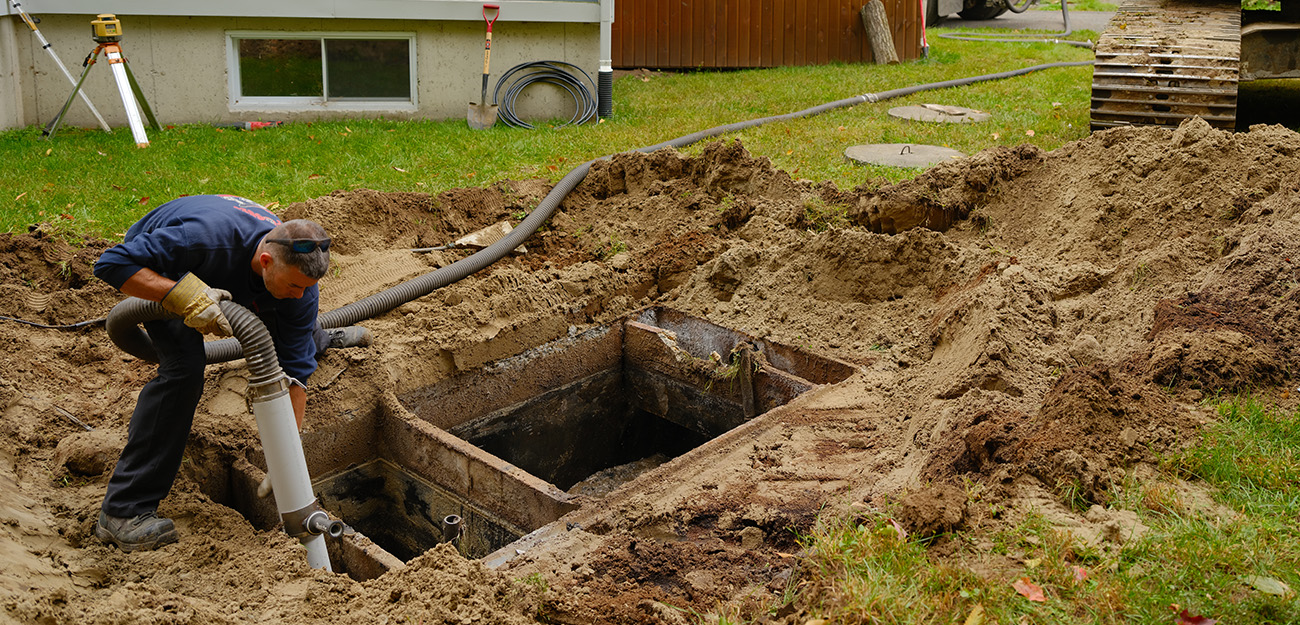Certain aspects of home ownership are not often discussed until there is a problem. The septic tank is one very important, but often neglected aspect of a house. It’s easy to believe that it will perform its job without maintenance. However, like any other system, septic tanks have an expected lifespan and, eventually they’ll require replacement.

The expense of replacing the septic tank can be a major financial burden on homeowners who are not prepared. It is vital to realize that there are many variables that affect the price of a Septic tank.
In order to figure out the cost of a new septic system, it is essential to look at more than just the cost. It’s not just a matter of removing the old tank and installing a new one. More than that, a variety of elements and services are a part of the total cost. From obtaining permits to hiring experts to the actual excavation and installation, each phase has costs that homeowners need to be aware of so that they can manage their finances effectively.
One of the primary considerations is the septic tank replacement cost itself, including the cost to install septic tank and leach field. The price of new tank can vary significantly depending on the dimensions and material of the tank and also the complexity of installation. In addition, the location of your home, the local regulations and soil conditions are also factors that can affect the cost. Get in touch with experts on septic systems to analyze your needs and provide an accurate estimate. Experts will take into consideration aspects like the size and shape of the leach fields to give an accurate estimation of your overall septic system project costs.
Leach fields, also known as drainfields, are another major expense. It plays a significant role in the treatment of wastewater and dispersal. Repairing a damaged or malfunctioning leach field needs careful planning and may significantly impact the overall cost of septic replacement. When calculating the cost, it is essential to take into account elements like the dimension and composition of the leach fields, their accessibility, and soil composition.
Homeowners must consider the costs that will be incurred by replacing the tank for septic. The process could disrupt your everyday life by requiring to temporarily leave your home, or restrict your use of water while the installation process is underway. These inconveniences must be factored into your planning as they may impact your daily routine and may lead to additional costs such as accommodation expenses or changes to your routine.
It’s important to remember that maintaining your septic tank on a regular basis is vital to extend its life span and decreasing the likelihood of premature replacement. If you don’t take care to do routine maintenance, it can cause more serious problems in the future, such as damage to drainfields and tank failure. Integrating maintenance costs for septic systems into your budget is an intelligent investment that will save you money in the long run.
You may have already realized how challenging it can be to determine the total cost for a new septic tank. It is a careful analysis of several elements, ranging from size and material of the tank, to the complexity of the installation and state of the leach field. Furthermore, the area of your property as well as local rules can affect the overall expense. To calculate accurately the cost, it is crucial to talk with experts that are skilled in the replacement of septic systems.
If you’re considering replacing your septic system, you could be amazed by the hidden costs. These expenses can be incurred quickly, and it’s essential to be aware prior to making a choice.
Hidden costs associated with system replacements for septic include:
The costs of permits and inspections. Your local authorities will require permits before beginning the work of replacing your septic systems. These permits could be expensive, and you might also need to pay additional for inspections.
The expense of removal and excavation. The old septic has to be removed and dug up prior to the new system is put in place. This can be a very expensive process, especially when it’s hard to access the previous system.
The cost of backfilling and Grading. After the old system is removed, the hole will need to be backfilled and graded. This ensures that your new system drains correctly.
The cost of landscaping is a significant expense. When the new system is installed, you may need to do some landscaping to keep the area looking tidy and neat. It could be costly, especially if a landscaper is needed.
When planning for a septic repair, you is a good idea to include hidden costs. This will ensure that you don’t get any unpleasant surprise.
Eco-friendly septic systems can be a fantastic option for homeowners who have the luxury of a budget. These eco-friendly septic solutions are not just economical alternatives to conventional systems, but they also help protect the environment through reducing runoff and water pollution. These eco-friendly solutions are increasingly inexpensive and readily available. They’re the ideal choice for those looking to lower their carbon footprint and not break the bank. Transitioning to a more eco-friendly method may come with some upfront costs, but they can be easily compensated by the long-term savings. Green isn’t just a trend–it’s a crucial lifestyle change that everyone should contemplate if they’re committed to preserving the planet for generations to in the future. When you install the correct system, you can ensure that your home operates efficiently in a timely manner, at a low cost for maintenance.